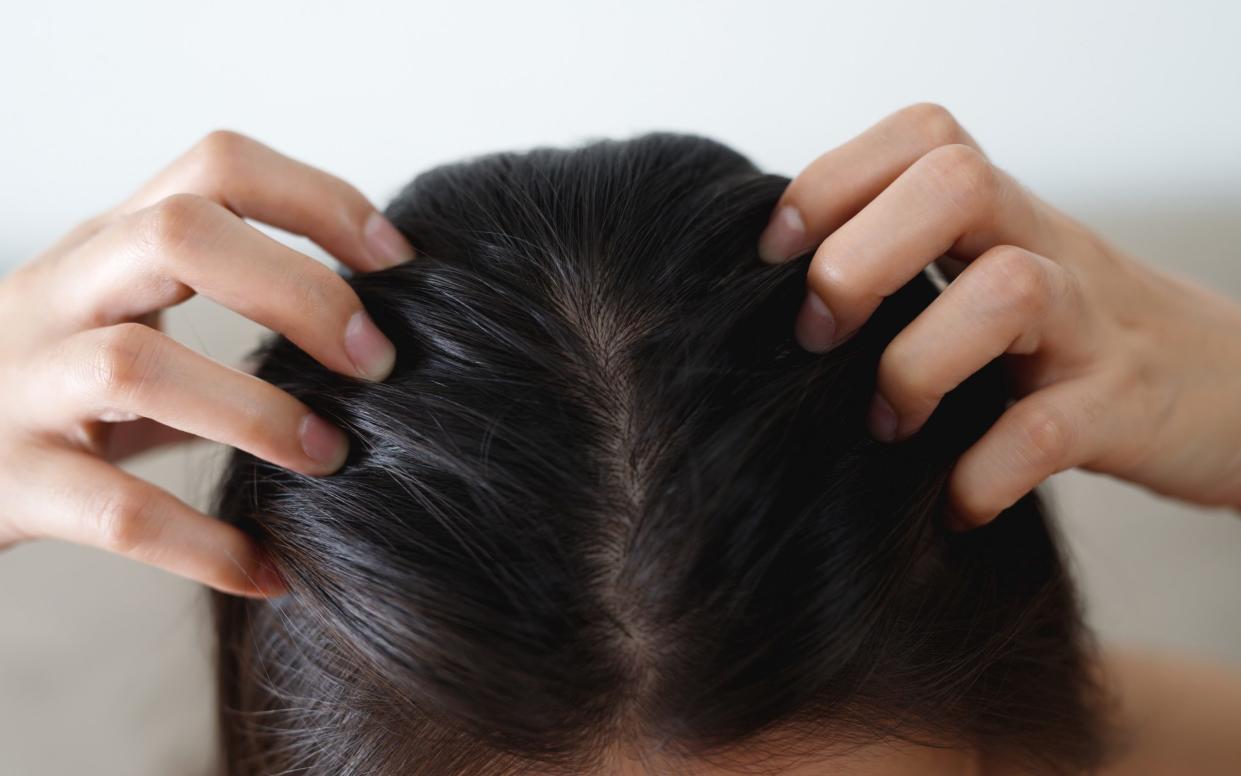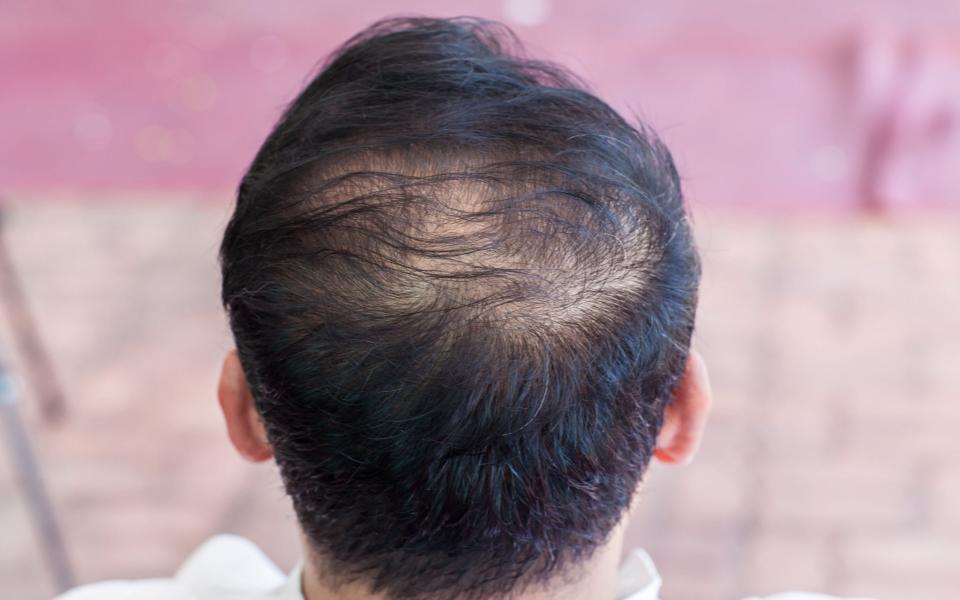Why a balanced scalp microbiome is key to getting healthy, thick hair

If you’re already taking a pre- or probiotic, then you’ll be aware of the positive impact of balancing your biome. Now, our relatively recent preoccupation with gut health and how bacteria can influence our overall well being, has reached, well, the tops of our heads.
When scalp health came to the fore some years ago, the analogy was simple; If you want the best flowers to grow in your garden, you nourish the soil. And boom, the scalp care market exploded, with an influx of products, treatments and ingredients.
In a similar vein to gut health, an out of whack scalp microbiome could be having a detrimental effect on the health, condition, and general brilliance of your hair.
What is the scalp microbiome?
Put simply, the scalp microbiome is the community of micro-organisms that reside on your head. This includes bacteria, fungi and other microbes. Just like all the other thriving populations of bacteria inhabiting different parts of your healthy body, the scalp flora can turn ‘bad’ under certain conditions, having a detrimental impact on the health of your scalp skin and hair.
Eva Proudman is the chairman of the Institute of Trichologists, and the UK’s leading hair specialist. She explains: “The scalp microbiome functions to keep the skin on the scalp and our hair healthy for optimum growth. Conditions such as dandruff and seborrhoeic dermatitis are a consequence of an imbalanced scalp microbiome, as well as hair shedding and thinning.”
And the scalp microbiome is unique, populated by two key types of bacteria: Cutibacterium acnes and Staphylococcus epidermidis (both of which are found in normal healthy skin), as well as a type of yeast called Malassezia, which is particularly attracted to the sebaceous (oil) glands.
The extra humid environment, combined with the roughly 280,000 oil glands found on the scalp, makes the microbiome susceptible to disruption. It’s why maintaining a healthy scalp microbiome is a key part of our haircare that should be taken as seriously as our skin-protecting and nourishing regime, particularly as we age.
How does it impact your hair?
Our scalp ages at a rate around six times faster than our face, which means our headcare regime needs to step up in accordance. On top of the natural ageing process, scalp-related problems like inflammation, flaking, dryness, and scaling can accelerate the scalp ageing process, and unfortunately, these are all symptoms of a problematic scalp microbiome.
“If the scalp is pink or red, if it itches, burns or creeps then there is an imbalance,” Proudman explains. But how exactly does this impact our hair and how can we fix it?
The issue: Dryness or greasy roots
The culprit: An overproduction of sebum is obviously going to affect the look of your hair and roots. Furthermore the products we are more inclined to use to counter these effects can exacerbate the issue, building up, obstructing hair follicles, stripping the hair of oils and disrupting the scalp flora. On the flipside, an underproduction of oil contributes to undernourished hair that is dull, less elastic, therefore prone to breakage and thinning.
The issue: Inflammation and irritation
The culprit: As evidenced elsewhere in our bodies (and particularly prevalent in women), an imbalance of yeast or bacteria can lead to inflammatory conditions that are incredibly uncomfortable and often require medication. Yes, you can get eczema and a candida yeast infection on your scalp, but more common is seborrheic dermatitis, an itchy inflammation of the scalp.
The issue: Dandruff
The culprit: Flaking can be a result of dryness, general inflammation and irritation, and a fungal infection that causes dandruff. And where there is dandruff, there is an increase in the Malassezia yeast found on the scalp.
The issue: Thinning and hair loss
The culprit: DHT is a testosterone byproduct mainly found inside the bloodstream, but it can find its way to the scalp via sebum and sweat production, and when levels of DHT are too high it can cause the hair follicles to shrink, making hair thinner, more brittle and likely to break or even fall out. More sebum equals more DHT.

But it’s not all bad news. A healthy microbiome can be sent into disarray by a whole range of factors including product build up, heat styling, water hardness, pollution, and lifestyle factors such as stress and diet. But knowledge is power.
If we know what tips your biome into imbalance, then we have all the information we need to restore it too.
Six steps to rebalance your scalp biome
Don’t overwash
First and foremost, the question of cleansing. How often is too often? Most experts recommend every 48 hours as optimum for a healthy scalp. Overwashing strips the hair of its natural protective oils which can cause an overgrowth of ‘bad’ bacteria.
Sam McKnight MBE is an iconic, world renowned hairstylist and expert who has formulated his own products with dermatologists for the health and longevity of his clients hair. “Shampoo is your main hair product which will go on the scalp, so it is important to use one that works with the biome, not against it. Many styling products should not be applied to the scalp but through the mid-lengths and ends so it’s always worth making sure you are applying these correctly. And if you live in a hard water area, give your scalp and hair a final rinse with bottled water, or install a water softener in your house.”
Hello Klean has a range of haircare formulated for hard water areas.
Stimulate blood flow
Hair brushing is another ritual that is excellent for your scalp health as well as for the immediate aesthetic effect on the hair. It helps to regulate sebum production, remove product buildup without shampooing, (which means less frequent washing), and stimulate blood flow and therefore nutrient delivery to the follicles too, all of which contribute to a better balanced biome and encourage hair growth.
But not all brushes are made equal. Look for one with specific scalp benefits like La Bonne Brosse, with boar bristles to distribute sebum along the length of the hair and a shock-absorbing cushion to care for the hair. La Bonne Brosse advise their clients to brush their scalp every day and, in all directions, vigorously. From back to front and vice versa, from one temple to the other. Ideally once or twice a day to combat thinning hair.
Incorporating massage into your washing routine also helps stimulate blood flow, but it’s also thought to encourage thicker hair growth by ‘stretching’ the follicles. Twice a day will benefit your scalp health as well as potentially lowering your stress levels, which brings us onto the next tip.
Start from the inside
Everything we know about the gut-brain-axis suggests that tackling the harmony of the gut is going to have a positive impact on the scalp.
Dr Justine Hextall is a consultant dermatologist who acutely understands how our lifestyle and diet choices may unbalance the human microbiome system. “I often see scalp flaking at times of stress in my patients. This may also be associated with seborrheic dermatitis, which for many individuals is triggered by stress, late nights, excessive alcohol and poor diet amongst others.” Whilst topical probiotics are a buzz ingredient in skin and scalp care today, Dr Hextall believes a more holistic approach is needed to tackle the underlying drivers of an imbalance in the biome. “I often recommend the probiotic Symprove to my patients, to help build a healthy gut microbiome whilst encouraging a prebiotic diet to feed the healthy bacteria, to see a more sustainable solution to scalp conditions.”
When it comes to balancing your diet, as well as including more vegetables, whole grains, and healthy fats, supplements to boost low levels of protein and iron (which can disrupt are key. Viviscal Healthy Hair Vitamins, or a hair and scalp-specific supplement such as The Nue Co Growth Phase will help with nutrient deficiency, stress, hormonal imbalance and pollution, while Champo pitta hair gummies take an ayurvedic philosophy, combining essential minerals with Ayurvedic Plant Extracts known for their hair-rejuvenating qualities.
Heat protection
Heat from styling tools can dry out the scalp and disrupt the microbiome, as well as damaging the surface of the hair shaft, so for the best conditions for hair growth, minimise heat styling where possible, or consider heat-free or low-heat options.
Inspired by the natural evaporating effect of sunlight and wind, Zuvi uses light and warm airflow to dry only the moisture droplets on the surface of the hair, protecting the scalp from overheating or drying. Similarly the innovative Ghd duet styler quickly dries each hair shaft directly from wet to straight without blasting any heat onto the scalp.
Protection from the elements will help to reduce stress on the scalp, so consider an SPF like Coola SPF 30 Daily Protect Scalp Mist, or covering your head in hot weather. And since sweat is also a literal hotbed for follicle damaging DHT, washing your hair after exercise is going to help.
Avoid harsh products
Product build up can disrupt the pH balance of scalp, so finding products with optimal pH levels (between 4.5 and 5.5 for the scalp) is key. But there are other ingredients and considerations to look out for, too. Boosting moisture with masks, oils and serums, exfoliating the scalp, steering clear of sulfates and parabens, and looking out for the Kind To Biome certificate will all help foster the best environment for healthier hair growth.

Go the extra mile
There are a plethora of scalp treatments to help balance the biome, from simple exfoliating and detoxifying to full-service trichologist interventions. As an entry level, consider at-home red light therapy, with proven benefits for the hair including tackling sebum over-production, scalp circulation and strengthening follicles for thicker hair.
The CurrentBody LED Hair Growth Helmet, £650, claims to improve hair growth by 123 per cent.
The Calecim hair restoration programme uses stem cell technology to reduce scalp inflammation and restore healthy hair-growth. It is not cheap at £315 for a six week course, but is very well regarded with many trichologists and hair surgeons recommending the treatment.
For more comprehensive professional advice consider a scalp analysis next time you visit your salon. Aveda offer scalp renewal Headspa services, a 75-minute treatment carried out by certified scalp experts designed to restore and nourish the scalp, while Hari’s salons now offer complimentary scalp health checks and trichologist-trained recommendations based on the results.
Recommended
The 12 best treatments for thinning hair that actually work – for men and women

